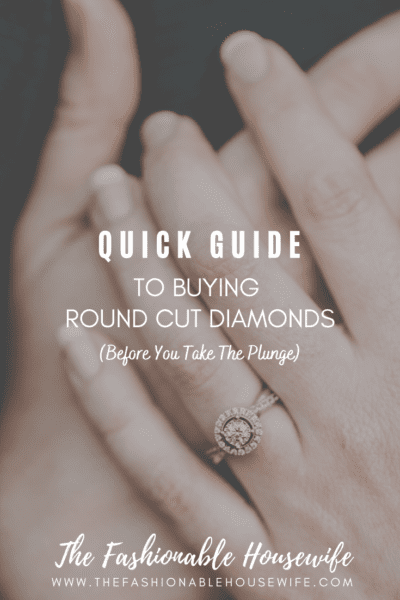
Round cut diamonds are the most popular diamond shape for engagements rings for women and maximize light return and sparkle. Consider your online shop carefully to ensure you maximize the chances of getting the diamond of your desire.
The following article will provide an insight into all the information you need to find diamonds of the highest quality.
About Round-Cut Diamonds
As mentioned above, round cut diamonds maximize the sparkle and brilliance of the diamond, which is part of the reason why they are so popular. The asymmetrical shape contributes to this light performance. They contain 58 facets and at least seventy-eight per cent of the total weight of the original diamond stone. Due to this you will find that round cut diamonds can be more expensive compared to other shapes.
Things to Consider When Buying Round-Cut Diamonds
Understanding Cut
Understanding the cut quality of a diamond is a vital when making a purchase, online or in store. The cut of the round diamond is the one characteristic that provides the sparkle on the diamond, reflection of light ability, stone facet symmetry, and the overall proportions. GIA groups the cut grades as excellent, very good, good, fair and poor. So, when choosing a round cut diamond, take note of this grading to understand what you will be getting. The AGS goes above and beyond the GIA when it comes to cut and is broken down as follow:
0 = Ideal
1 = Excellent
2 = Very Good
3,4 = Good
5,6,7 = Fair
8,9,10 = Poor
What Color You Want
Grades D, E, and F are the colorless ones and are more expensive than near colorless one’s grades G to J, K to M is faint. At the completely other end of the scale you have “fancy yellow”, however that is for another time. Color can be very subjective, and certain people are more color sensitive than others. Usually I would recommend going for H and above, although a well-cut K color diamond can still appear white looking at it top down providing it is cut well.
Clarity Grade
Diamond clarity has 6 categories that are then split into 11 grades:
- Flawless (FL) No inclusions and no blemishes visible under 10x magnification
- Internally Flawless (IF) No inclusions visible under 10x magnification
- Very, Very Slightly Included (VVS1 and VVS2) Inclusions so slight they are difficult for a skilled grader to see under 10x magnification
- Very Slightly Included (VS1 and VS2) Inclusions are observed with effort under 10x magnification, but can be characterized as minor
- Slightly Included (SI1 and SI2) Inclusions are noticeable under 10x magnification
- Included (I1, I2, and I3) Inclusions are obvious under 10x magnification which may affect transparency and brilliance
I would recommend aiming for VS2 or better, however make sure that the diamond is “eye clean”. This means that any inclusions are only visible under a microscope.
The Setting
Choose the right setting for your stone. If you have a stone around 1 carat then 4 prongs are more than enough, however 2 carat and above I would recommend going with 6 prongs, so the diamond is secure.
Ensure you buy a stone you can afford that bears the right mix of the 4cs for your needs. It is also important to look at the different types of metals that can be used for the setting. Some metals are durable than others, so pay particularly close attention to this.



